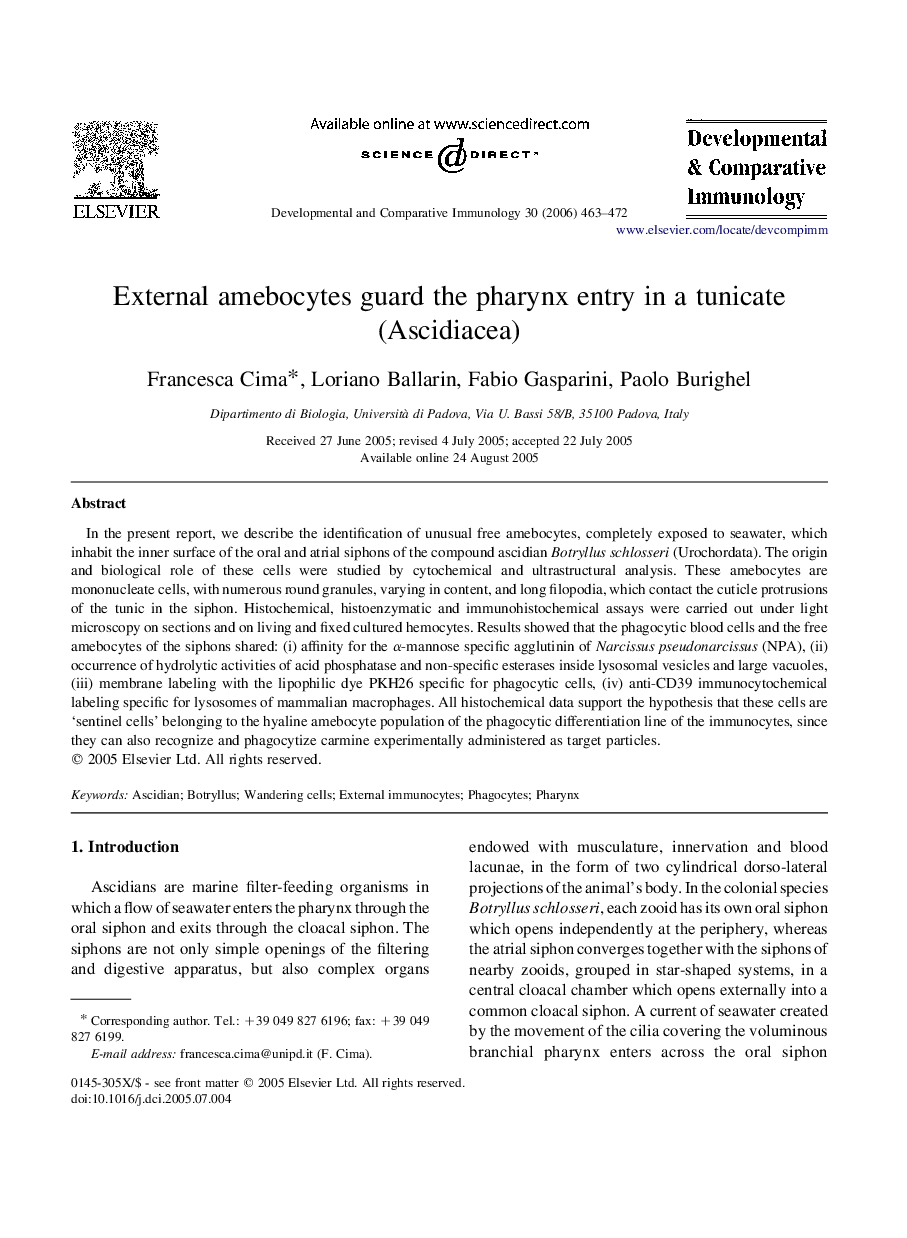| Article ID | Journal | Published Year | Pages | File Type |
|---|---|---|---|---|
| 2430524 | Developmental & Comparative Immunology | 2006 | 10 Pages |
In the present report, we describe the identification of unusual free amebocytes, completely exposed to seawater, which inhabit the inner surface of the oral and atrial siphons of the compound ascidian Botryllus schlosseri (Urochordata). The origin and biological role of these cells were studied by cytochemical and ultrastructural analysis. These amebocytes are mononucleate cells, with numerous round granules, varying in content, and long filopodia, which contact the cuticle protrusions of the tunic in the siphon. Histochemical, histoenzymatic and immunohistochemical assays were carried out under light microscopy on sections and on living and fixed cultured hemocytes. Results showed that the phagocytic blood cells and the free amebocytes of the siphons shared: (i) affinity for the α-mannose specific agglutinin of Narcissus pseudonarcissus (NPA), (ii) occurrence of hydrolytic activities of acid phosphatase and non-specific esterases inside lysosomal vesicles and large vacuoles, (iii) membrane labeling with the lipophilic dye PKH26 specific for phagocytic cells, (iv) anti-CD39 immunocytochemical labeling specific for lysosomes of mammalian macrophages. All histochemical data support the hypothesis that these cells are ‘sentinel cells’ belonging to the hyaline amebocyte population of the phagocytic differentiation line of the immunocytes, since they can also recognize and phagocytize carmine experimentally administered as target particles.
